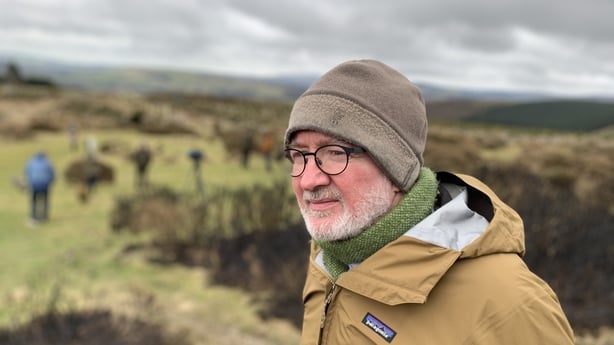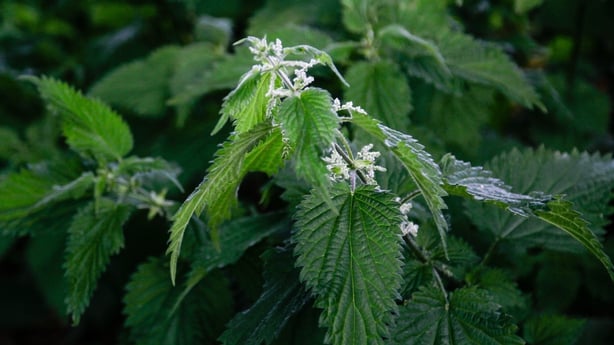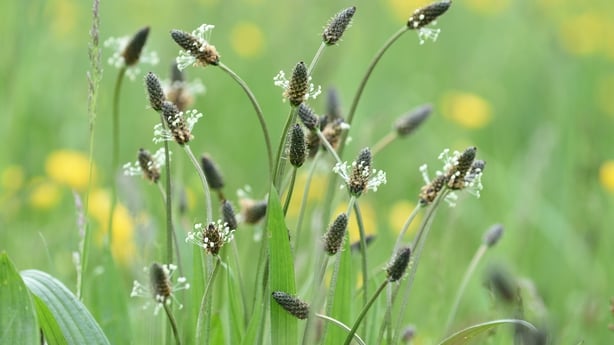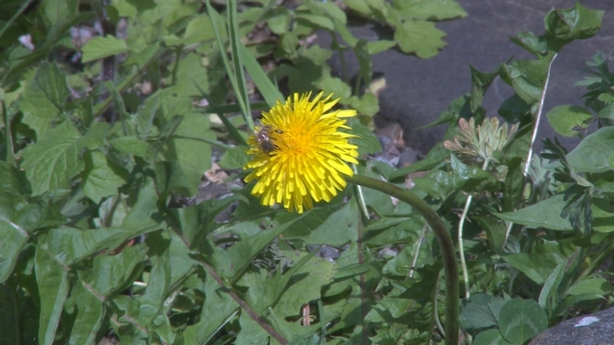People should make space for weeds in gardens, balconies and in places of work, the Minister for Heritage and Electoral Reform Malcolm Noonan has said.
The minister said that all plants have value and some of the ones we call weeds are really important for nature.
To many people so-called weeds are unwanted, unwelcome and untidy. They are relentless, prolific and bold. And they are unstoppable when it comes to invading our spaces.
Yet many of the wildflowers we call weeds have incredible properties and they are the cornerstone of the biodiversity on which we all depend.

Nettles
Rachel Hussey of the Ecovillage in Cloughjordan, Co Tipperary, is quite an expert on nettles.
She says nettles are probably one of the most important wild plants, native to Ireland, that support our wildlife.
They create a habitat and food for over 40 different species of insects.
The plant, which thrives in moist soil with plenty of phosphorous and nitrogen, can grow more than a metre high in the best soil conditions.
It is a really important food source for insects in early spring.
That is when certain sap-loving aphids which have over-wintered on nettles in turn become food for ladybirds and blue tits.

Nettles are also key to the survival of several of our most colourful butterfly species, including the Red Admiral which flies all the way from the Mediterranean to lay their eggs on Irish nettles.
The flowers of the nettle are inconspicuous, hanging on small catkin-like tendrils.
But according to Ms Hussey they provide food, medicine and fibre.
She says that during the Famine in the mid-19th century, people used to supplement their diets with nettle, eating so much of the plant that in some cases their skin was described to have developed a green tinge.
The seeds which have a mild nutty taste can be collected in autumn and are extremely nutritious.
According to Ms Hussey, they are packed with vitamins and minerals like iron and potassium and can give a person quite a boost.
She says that nettle leaves are packed with substantially more "good things" than spinach leaves and that one can substitute nettles for spinach in any recipe for cooking.

'Health Plant'
But it is not just nettles. Rachel is also a big fan of another rather unassuming weed called plantain.
It is widespread, growing easily on roadsides, and in gardens and on wasteland all over the country.
It tends to grow in clumps with a rosette-type pattern of long lance-shaped green leaves.
It has a type of bullet-shaped brown flower head with the stamens that stand up on it like a small halo.
Pollen records show that this plantain weed has been thriving in Ireland for over 5,000 years.
Its name in Irish when translated into English is 'Health Plant' and its leaves are used for their antibacterial and antihistamine properties.
Ms Hussey says this is the plant a person should look for if they get stung by a nettle or an insect, or if they get a graze of a cut.
She says that for relief one only needs to take a clean leaf of plantain, chew it a small bit to release the sap, and then apply the chewed leaf directly (like a plaster) onto the sting or the cut, and nature will do the rest.
Birds, bees, hoverflies, and moths all love this plant.
The flower head of plantain is edible (fry them with butter) and has a mushroom-like taste but not the same texture as mushrooms.
Plantain may indeed be widespread weeds, but they are nowhere near as widespread as the common dandelion.
This bright and cheerful yellow headed wildflower is really a wonder weed.
It is packed with vitamins and minerals, and every part of it can be used medicinally.

Dandelion
The dandelion is arguably the most successful plant on the planet, growing everywhere.
Contrary to first appearances, the big yellow headed flower of the dandelion is not a single flower. Rather it is a hundred or so small little individual florets, each with their own pollen and high-quality nectar source.
Over 93 different insects visit dandelions, including early bees and hover flies and butterflies thrive on dandelions.
The roots have traditionally been used for the biliary system - to treat liver conditions. The leaves are great diuretic and so would be used traditionally for treating urinary systems. The flowers have a mild analgesic effect and so can be made into a soothing potion.
In addition to all that, the individual dandelion flower heads are edible and can be added to a salad.
The leaves, apart from their diuretic quality, are very high in iron although they do tase bitter. In fact, the stalk of the dandelion plant is the only part of it the plant that cannot be eaten.
That is because the contains a white milk-like sap which has traditionally been used for getting rid of warts.
Putting it all together many might argue that its quite an insult to to label the wildflowers that are growing all round us as weeds.
They provide us with food, with medicine, and with a high and vital support for biodiversity which is the nature on which we all depend.
The more we know about them the more wonderful these so-called weeds become.






